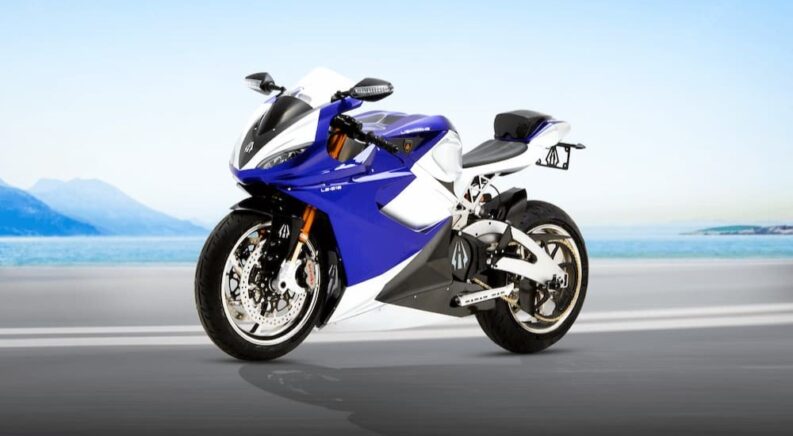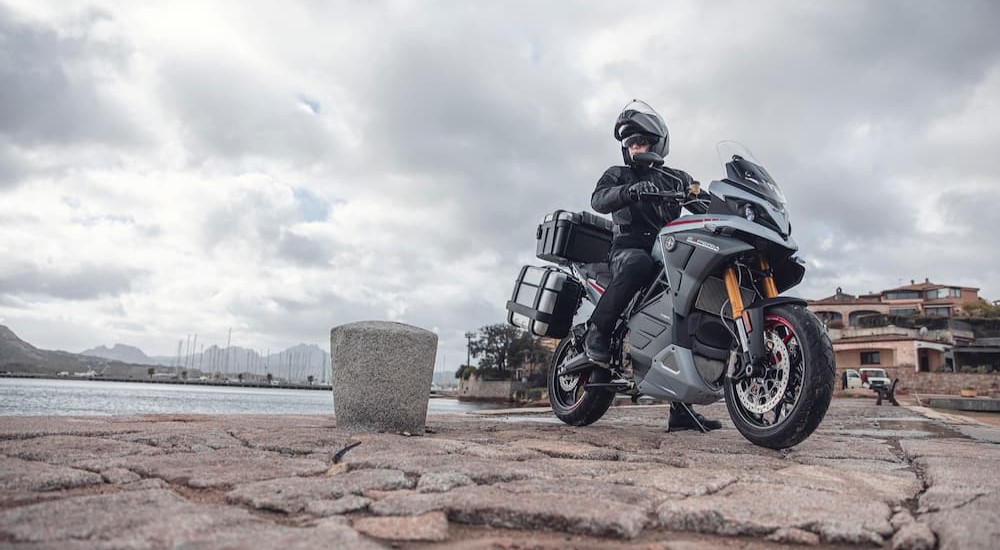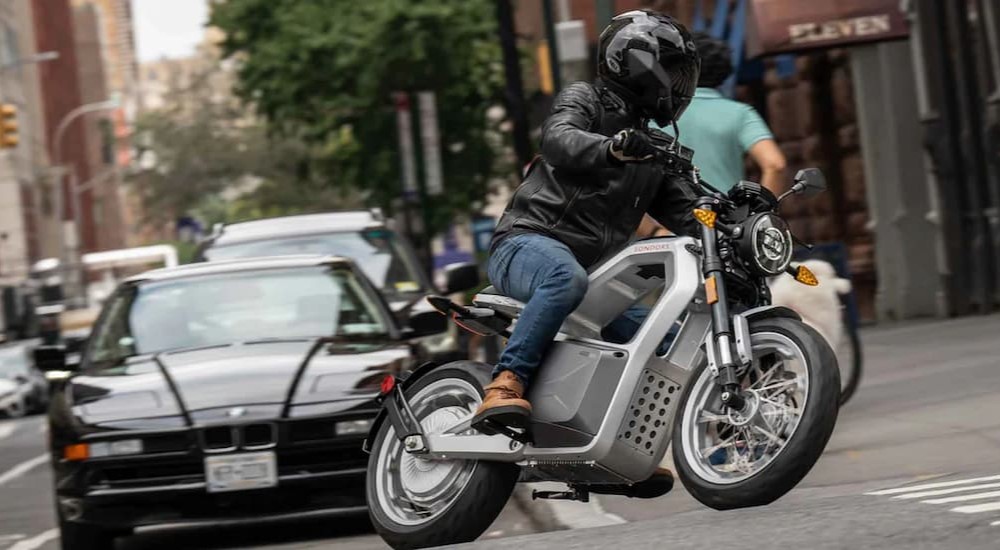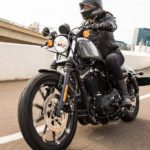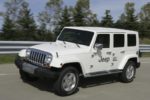With new models hitting the streets every month, electric vehicles are here to stay. The segment has grown from a niche market aimed at the environmentally conscious to an undeniable force in the modern automotive industry, with both startups and established automakers locked in fierce competition to produce the vehicles of the future. From sports cars to pickup trucks, almost every segment has seen a dramatic rise in electric offerings over the last decade, with one major exception.
Motorcycles are still a little behind the curve when it comes to electrification, but that’s quickly changing. From established players like Harley-Davidson and Kawasaki to dedicated e-motorcycle startups like Zero and Energica, the segment is growing at a steady pace that doesn’t look to be slowing down anytime soon. According to a study by Next Move Strategy Consulting, the electric motorcycle segment is poised to explode in the coming decade with a 10.2 percent compound annual growth rate and be worth as much as $109 billion by 2030.
The recent growth in EV infrastructure and an increasing acceptance of electric vehicles are driving these impressive estimates. But it all begs the question: are electric motorcycles ready for prime time? Join us as we take a look at the state of today’s electric motorcycle industry, check in on new brands and long-time favorites, and discuss some of the pros and cons of going electric.
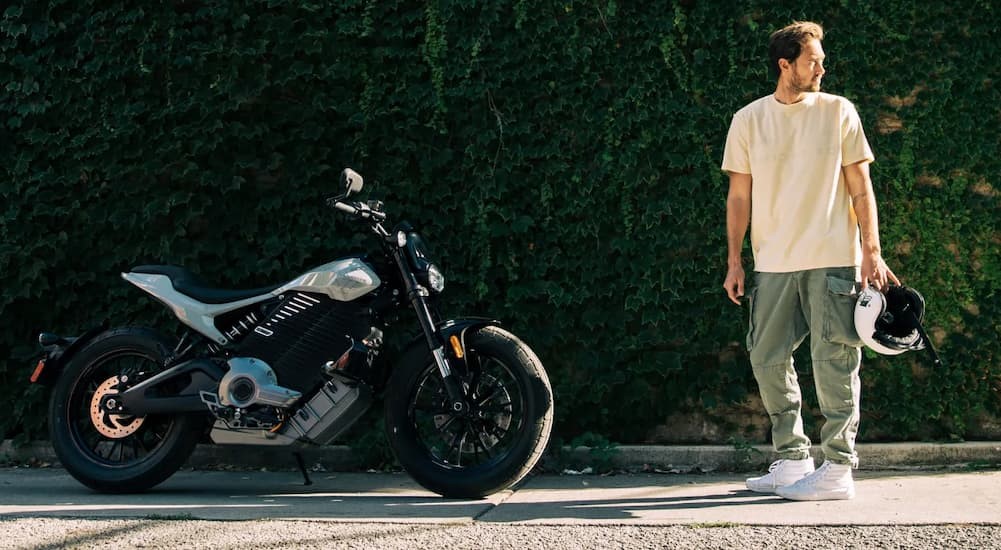
Where’s the Industry At?
The motorcycle segment has been well behind the rest of the auto industry when it comes to introducing electric options, but it’s now making up for lost time with a raft of intriguing offerings from some ambitious startups. These models run the gamut from performance-minded bikes like the Lightning LS-218, a 244 hp sport bike with a 0-60 time of under two seconds, to less-intense, commuter-focused fare like the SONDORS Metacycle.
Looking for maximum range? The Experia from Italian brand Energica boasts 261 miles of city range, meaning you’ll almost never have to interrupt your ride to juice up the battery. Chinese EV brand Super Soco has placed emphasis on adventure bikes and scooters and is the early leader when it comes to pure selection, with a dozen models already introduced to the public over the last seven years. Then there’s Zero. Established in 2006, this brand is the grizzled veteran of the electric motorcycle segment. With 10 distinct models on offer and a strong track record, Zero could well be called the Tesla of the electric motorcycle market.
Not content to let the newcomers have all the fun, Kawasaki and Harley-Davidson have also thrown their hats into the electric motorcycle ring. The brands got off to something of an underwhelming start, with both rolling out electric balance bikes aimed at small children, but they’ve got their sights aimed a good deal higher. Kawasaki will unveil all-electric versions of its Ninja and Z models in 2023. Expected to be equivalent to a traditional 125cc bike, these Kawasaki models might not be the most thrilling things on two wheels, but they’re an important step towards an all-electric future.
After a relatively slow start, industry stalwart Harley-Davidson has made a major commitment to the burgeoning electric motorcycle segment with the introduction of the LiveWire. Introduced in 2019, the flagship bike has a top speed of 115 mph, a range of 146 miles, and phenomenal acceleration thanks to its 84 lb-ft of torque. In 2021, Harley-Davidson announced that LiveWire would be spun off as its own company, earning a valuation of $1.8 billion and giving the two brands a chance to dominate both the traditional and electric motorcycle segments.
For Harley-Davidson, electric motorcycles not only represent the future but also provide the perfect training ground for those who aspire to get behind the wheel of an old-fashioned, gas-burning hog. “EV motorcycles lower the barrier of entry to riding motorcycles, since without a traditional transmission and clutch, these bikes literally make riding as simple as twist and go,” says Harley-Davidson’s CEO and President Matthew Levatich. “We can get people on an EV motorcycle and move them up the learning curve to full enjoyment much quicker.”
As far as the rest of the motorcycle industry goes, it’s a bit of a mixed bag. BMW and Yamaha have both dipped their toes into the market with some electric scooters but have yet to make the jump to full-on electric motorcycles. Honda has set a target of moving 15 percent of its sales into the electric realm by 2030 and aims to have 10 electric models on offer by 2025, but it’s been slow-going thus far. Ducati has been similarly stagnant in the consumer market, but the Italian brand isn’t just twiddling its thumbs over there in Bologna. Ducati is now the official supplier of bikes for the MotoE championship, which gives the company the perfect testing ground to develop the next generation of high-performance electric motorcycles.
Electric Motorcycle Pros and Cons
Pro: Great for beginners
Motorcycles don’t always have the easiest learning curve, but an electric bike can make all the difference. You won’t have to worry about shifting or stalling when you’re on the back of an electric motorcycle, as operating it is as easy as twisting the throttle. This leaves ample time for learning some of the more important aspects of motorcycle riding, like how to not tip over every time you pull up to a stop light. As Harley-Davidson CEO Matthew Levatich mentioned in the quote above, this bodes well for the industry as a whole by giving more people a chance to experience life in the saddle.
Con: Charging
We’ll start with the most common complaint about not only electric motorcycles but EVs in general: charging. There’s no getting around the fact that, unlike traditional motorcycles, “refueling” an electric motorcycle is always going to be a comparably time-consuming task. This has improved a bit in recent years with the introduction of DC fast-charging stations and the increased presence of charging stations in general, but it’s still a dealbreaker for many riders.
Pro: Maintenance Costs
The internal combustion engine might have served society well over the last 100 years, but it’s far from being the most elegant invention mankind has ever come up with. The average gasoline vehicle relies on around 30,000 components to get the wheels turning, while EVs tend to have about half that. The massive reduction in complexity means electric motorcycles are typically much cheaper to service and maintain than their gas-powered counterparts. That means less time worrying about adjusting valves, swapping spark plugs, and changing oil, and more time enjoying the open road.
Con: Quiet
Without an engine, electric motorcycles make very little noise. Of course, being quiet isn’t always a good thing. You’ll often hear riders say, “Loud pipes save lives,” and for a good reason. If a motorist can hear you coming, they’ll be more aware of your presence, which usually leads to better outcomes for all involved. Due to the fact that they run almost silently when compared to gas-powered bikes, some riders worry that electric motorcycles might fall off the radar of the average driver ensconced in their climate-controlled bubble.
Pro: Efficiency
EVs are always going to be more efficient than gas-powered vehicles, and electric motorcycles are no exception. For instance, the Zero SR gets an estimated 10.8 miles per kWh in the city. With an average national electricity price of 16.5 cents per kWh, it would only cost about $1.50 to travel 100 miles. For a comparable gasoline bike, you can expect around 50 MPG and a cost of about $7.50 to travel 100 miles.
Con: Cold-Weather Performance
Like all electric vehicles, electric motorcycles don’t do very well in the cold. This is because the batteries that power these electric vehicles lose some capacity when exposed to low temperatures, reducing the bike’s range and overall performance. That said, electric motorcycles are generally going to be less affected by this issue than four-wheeled EVs due to the simple fact that riding tends to be more of a warm-weather activity. If you do live in an area where temperatures dip below freezing, and you’re the type of rider who just refuses to hibernate, make sure to plan ahead and keep a close eye on the forecast.
Pro: Torque
When you’re on an electric motorcycle, you’re never hurting for torque. Unlike gas engines, which need to get up to speed to reach their maximum performance, an electric motorcycle delivers instant torque the second you twist the throttle. This might take a little getting used to for some riders, but once you learn to harness the power, you’ll never worry about another passing maneuver again. Case in point: a Lightning LS-218 won the 2013 Pikes Peak International Hill Climb event, proving that there’s no compromise on performance when it comes to electric motorcycles.
An Exciting New Option
While it’s still in its infancy, the electric motorcycle market holds a lot of promise. Adoption might take some time, but as we’ve learned from the recent success of some electric pickups and SUVs, even the most diehard ICE fan can be converted if you’ve got the goods under the hood––or, in this case, under your seat. The race to develop the next generation of electric motorcycles is good news for all involved, with enterprising startups keeping established brands on their toes and raising the bar when it comes to performance, comfort, and innovative features.
Not only are they more affordable to operate than traditional gas-powered motorcycles, but they also offer improved acceleration, lower maintenance costs, and a shorter learning curve. Sure, there will always be those riders who’ll gravitate towards the biggest, loudest, most exhaust-spewing model on the market, but electric motorcycles represent an exciting new option for those looking for an alternative to the challenging rides of old.

